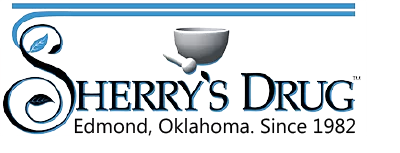PROGESTERONE ROLES AND RECEPTORS
Progesterone is a central factor in the biosynthesis of other hormones, but it also has many other important functions in the body, as shown in figure 4.2.
Figure 4.2. The Multiple Roles of Natural Progesterone
Progesterone has important effects throughout the body, and on all systems of the body, including acting as a precursor to the steroid hormones, maintaining pregnancy and other reproductive functions, and many intrinsic, or built-in, regulatory functions.
THE MULTIPLE ROLES OF PROGESTERONE IN A NUTSHELL
Procreation
- Maintains the secretory endometrium (the lining of the uterus) for nurturing a possible fertilized ovum.
- Makes the cervical mucus accessible by sperm
- Allows embryo to survive
- Stops ovulation by the other ovary
- Prevents the immune rejection of the developing baby, which carries the "foreign" DNA of the father
- Allows for full development of the fetus throughout pregnancy
- Facilitates the use of body fat for energy during pregnancy
- Activates osteoblasts to increase new bone formation
- Allows development of baby without secondary sexual development
- Increases libido at the time of ovulation
Hormone Precursor Effects
- Functions as a primary precursor for all adrenal corticosteroids
- Functions as a primary precursor for estrogens
- Functions as the primary precursor for testosterone produced by testes in males
Intrinsic Effects
- Protects against breast fibrocystic:
- Protects against endometrial, breast, ovarian, and prostate cancer
- Normalizes blood clotting (excess estrogen causes abnormal blood clotting) and protects against strokes
- Acts as a natural diuretic (excess estrogen causes water retention)
- Acts as a natural antidepressant and relieves anxiety
- Helps normalize blood sugar levels
- Restores proper cell oxygen levels (estrogen depletes cell oxygen levels)
- Normalizes zinc and copper levels
- Helps thyroid hormone function (estrogen interferes with thyroid hormone use)
- Helps use fat for energy (estrogen converts food energy into fat)
- Stimulates osteoblast-mediated new bone formation (reverses osteoporosis)
- Maintains normal cell membrane functions
- Restores normal sensitivity of estrogen receptor
- Has beneficial anti-inflammatory effects
- Is useful in some cases of seizure disorder (epilepsy)
- Reduces the incidence of autoimmune disorders
- Is thermogenic (raises body temperature)
- Helps metabolize body fat for energy production
- Helps prevent hypertension
- Prevents yeast {candida) infections at physiologic doses
- Increases immunoglobin E (lg-E) to help prevent sinus, respiratory, and vaginal infections and allergic reactions
Sites
Symptoms/Actions Benefited by Progesterone
Adrenal glands
Corticosteroid production
(Brain) Limbic brain
Emotion/psychological symptoms, epilepsy
(Brain) Hypothalamus
Menstrual cycle (gonadotrophin-releasing hormone),
hot flashes, and libido
(ventral medial nucleus)
(Brain) Preoptic area
Libido (sex drive)
(Brain) Ventral tegmental area
Libido (sex drive)
(Brain) Meninges
Headaches
(Brain) Pituitary
Gonadotropic hormones
Peripheral nerves
(Schwann's cells}
Myelin repair
Respiratory system
Nasopharyngeal
mucosa
Rhinitis, sore throat, sinusitis,
pharyngitis, laryngitis
Lungs
Asthma
Skin
Dryness and thinning, various dermatoses, alopecia
Eyes
Glaucoma
Breast
Breast lesions, cell maturation, and replication rate
Fallopian tubes
Congestion, dysfunction
Uterus (fundus)
Endometrial diseases, myomata
Uterus (cervix)
Cervical mucus changes
Testes
Testosterone production
Hormones convey their messages only where and when receptors for them are available. The multiple roles of progesterone are illustrated by the range of progesterone receptors throughout the body. Based on our current knowledge, here are the areas of the body where progesterone receptors are found.
